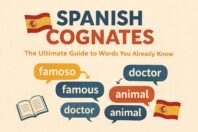Qué tal: Meaning, uses, and comparison with Cómo estás

Get our free email course, Shortcut to Conversational.
Have conversations faster, understand people when they speak fast, and other tested tips to learn faster.
More infoQué tal and cómo estás are two phrases native Spanish use constantly use when greeting someone. Their fundamental meanings are very similar: How are you? However, qué tal and cómo estás may have other connotations depending on the situation and context they’re uttered in.
Let’s see each of these common Spanish expressions in detail.
Qué tal: Meaning
Qué tal can’t really be translated literally, because it’s a very idiomatic phrase. Qué means what, while tal is of Latin origin and is used to refer to the quality of things. When the words are used together, qué tal is used to ask about the state of people or things.
Qué tal in English can take a number of translations depending on the intention and situation of the speaker. Here are some of the best interpretations of qué tal in English:
- Hello!, Hi!
- What’s up?, How’s it going?
- How are you?
- How is… going?
- What if…?, How about…?
Now let’s go over each of these possible qué tal meanings, with examples. They range from very informal and almost rhetorical, to forming questions to elicit more-detailed replies.
Qué tal: Hello!, Hi!
This is the most informal usage of qué tal in Spanish, where we simply use it as a quick greeting. It’s pretty common when you’re in a shop and greet the cashier, for example. In this sense, it’s basically an equvalent to hola.
- Client: ¡Qué tal! / Shopkeeper: ¡Hola! – Client: Hello! / Shopkeeper: Hi!
Qué tal: What’s up?, How’s it going?
This version of qué tal in English is almost as informal as our last one. It’s almost rhetorical, though the other person can respond with a quick reply. Think of this one as a quick greeting between friends who see each other regularly.
- ¿Qué tal? / Todo bien. – What’s up? / It’s all good.
Qué tal: How are you?
In English, how are you? is slightly more formal than what’s up?, even though it’s still often used as an almost-rhetorical version of hello. The usual response in Spanish is pretty basic but can be more in-depth, just like in English where the most common response is fine but it’s still ok to respond with more detail.
- Hola Juan, ¿qué tal? / Bien, gracias. – Hey Juan, how are you? / Fine, thanks.
Qué tal: How is… going?
With this meaning of qué tal, we’re finally getting into questions where we’re looking for a considered response. This use of qué tal in English can take several forms depending on the context, but it generally starts along the lines of how is… or how are… We can use this question to ask how things are or were, in the present or the past.
In terms of usage, we start our question with qué tal, and then follow with whatever we’re interested hearing about. This can be a noun if we’re asking about people or about a specific activity:
- ¿Qué tal el trabajo hoy? – How was work today?
- ¿Qué tal las vacaciones? – How was your vacation?
- ¿Qué tal tus hijos? – How are your kids doing?
We can also follow qué tal with a conjugated verb to ask about how something is or was going:
- ¿Qué tal estás hoy? – How are you doing today?
- ¿Qué tal me veo? – How do I look?
- ¿Qué tal saliste en el examen? – How did you make out in the test?
Qué tal si…: What if…, How about…
This use of qué tal differs from the previous ones, as it’s used to suggest a situation for the near future. With this construction we follow qué tal with si, meaning if, with the whole expression taken as a single phrase to introduce the proposition. Common translations for qué tal si…? are what if…? or how about…?
- ¿Qué tal si vamos al cine esta noche? – How about we go to the cinema tonight?
- ¿Qué tal si el avión no llega nunca? – What if the plane never arrives?
Cómo estás: Meaning
The other common expression for how are you in Spanish is cómo estás. By now you’ve surely heard ¡Hola! ¿Cómo estás? in Spanish used as a quick greeting to say Hi! How are you? Clearly, it’s very similar to qué tal.
Cómo estás is our literal translation of how are you: cómo is the Spanish question word meaning how, while estás means are you (or you are) since it’s the tú conjugation for the verb estar.
Since the Spanish formal you conjugation of estar is usted está, the phrase becomes cómo está. Unlike cómo estás, where we never include the pronoun tú, in the formal version we sometimes include the pronoun: ¿cómo está usted?
Just like its equivalent in English, when we ask how are you? in Spanish with cómo estás or cómo está, our intent can range from rhetorical greeting to sincerely asking for a response on how the person is doing. Depending on the context, here are a few common translations for cómo está in English:
- Hello!, Hi!
- What’s up?, How’s it going?
- How are you?
Qué tal vs Cómo estás
Did you notice that these meanings for cómo estás and qué tal are identical? In reality, when our intent is to offer a greeting or ask the straightforward question of how the other person is doing, both qué tal and cómo estás can generally be used interchangeably. The main nuance is that qué tal is slightly more informal than cómo estás. Stick with cómo está if you need to be formal.
- Buenas tardes, Enrique. ¿Qué tal? – Buenas tardes, Enrique. ¿Cómo estás? – Good afternoon, Enrique. How’s it going?
- Buen día señor. ¿Cómo está? / Muy bien, gracias. ¿Y usted? – Good morning, sir. How are you? / Very good, thanks. And you?
The other main difference between these two expressions is that qué tal has the additional uses we saw earlier, where it’s used to introduce questions that go into other details beyond how are you? Cómo estás is only used to ask how are you in Spanish.
Finally, we’ll mention that although qué tal and cómo estás are essentially asking the same thing, it’s still totally normal to use them both together! However, when we use both together, they’re always used in the same order: qué tal, then cómo estás.
- Qué tal Pablito! ¿Cómo estás? – Hey Pablito! How’s it going?
- Hola Maria! ¿Qué tal? ¿Cómo estás? – Hi Maria! What’s up? How are you?
Remember that qué tal and cómo estás are just two of the most common greetings in Spanish. For a nice variety of others, we recommend our other post on Spanish greetings and goodbyes.
Common responses to ¿Qué tal? and ¿Cómo estás?
Now that we’ve covered these two expressions for asking how are you? in Spanish, let’s just conclude by listing a few of the most common quick responses:
- Muy bien. Gracias por preguntar. – Very well. Thanks for asking.
- Bien, gracias. ¿Y tú? – Fine, thanks. And you?
- Todo bien. Gracias. – All good, thanks.
- Más o menos. – So-so. – Not so fine.
Conclusion: How are you in Spanish
Between qué tal and cómo estás, you’re now very familiar with both of these common ways to ask how are you in Spanish.
Both expressions can be used on their own (or even together!) whether as an almost-rhetorical greeting or as a simple question asking how the other person is doing. In this sense, qué tal vs cómo estás can be used in essentially the same contexts, although qué tal is definitely more informal. Cómo está is definitely the best choice in more-formal situations where we’re addressing the other person as usted.
Qué tal has additional uses, enabling us to ask questions with more detail. When used along with nouns or verbs, we’re asking the for the other person’s input on something. When used as qué tal si…, we’re making a proposal to the other person.
We hope you’ve enjoyed this post, and that you’re now clear on using qué tal and cómo estás to ask how are you in Spanish, and also on using qué tal for asking other questions. Thanks for reading! In closing… ¿Qué tal si haces algunos ejercicios? – What about doing a few exercises?
Exercises: Qué tal vs Cómo estás vs Cómo está
Fill in the blanks by choosing the correct option between qué tal, cómo estás, or cómo está.
1. ¡Hola! ¿ _____ ? ¿Cómo estás?
2. ¿ _____ si vamos a comer algo a la hamburguesería?
3. ¡Hola! ¿ _____ ? Qué bueno verte.
4. Encantado de conocerlo ¿ _____ ? / Bien, gracias. Gusto en conocerlo.
5. ¿ _____ si no pago la cuenta?
Answers
1. ¡Hola! ¿Qué tal? ¿Cómo estás? – Hey! What’s up? How are you?
2. ¿Qué tal si vamos a comer algo a la hamburguesería? – How about going for something to eat at the burger place?
3. ¡Hola! ¿Qué tal? Qué bueno verte. – ¡Hola! ¿Cómo estás? Qué bueno verte. – Hello! How are you? Nice to see you.
4. Encantado de conocerlo ¿Cómo está? / Bien, gracias. Gusto en conocerlo. – Nice to meet you. How are you? / Fine, thanks. Nice to meet you.
5. ¿Qué tal si no pago la cuenta? – What if I don’t pay the bill?



